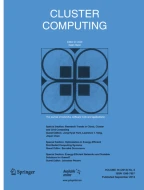Abstract
The traditional way of lexical interpretation is to use some words to explain other words. These semantic information cannot be used to solve the problem of natural language processing oriented to the physical situation. Based on this, this paper proposes a new method based on the feature vector Word semantic representation model and its corresponding learning algorithm Sal-F. This algorithm applies the idea of cross-scenario learning to the alignment of “word-shape features” and uses the result of feature selection under MSAV to construct a visual semantic model Lsm-G, A semantic dictionary based on graph features is constructed. Using machine-oriented evaluation method, the average selection accuracy of this algorithm is about 70%, and the accuracy of sentence selection is up to 16%.
Similar content being viewed by others
References
Jiang, H.: Effects of word presentation modes on EFL vocabulary learning. studies in literature and language. Stud. Lit. Lang 10(3), 111–112 (2015)
Lugo-Neris, M.J., Jackson, C.W., Goldstein, H.: Facilitating vocabulary acquisition of young English language learners. Lang. Speech Hear. Serv. Sch. 41(3), 790 (2016)
Burgoyne, K., Kelly, J.M., Whiteley, H.E., Spooner, A.: The comprehension skills of children learning English as an additional language. Brit. J. Educ. Psychol. 79(Pt 4), 371–372 (2016)
Majerus, S., Poncelet, M., Van der Linden, M., Weekes, B.S.: Lexical learning in bilingual adults: the relative importance of short-term memory for serial order and phonological knowledge. Cognition 107(2), 112–113 (2017)
Graf Estes, K., Edwards, J., Saffran, J.R.: Phonotactic constraints on infant word learning. Infancy 16(2), 91–92 (2015)
Pulido, Diana: The relationship between text comprehension and second language incidental vocabulary acquisition: a matter of topic familiarity? Lang. Learn. 57, 83–84 (2017)
Begagić, Mirna: English language students’ productive and receptive knowledge of collocations. ExELL 2(1), 51–52 (2017)
Nakata, Tatsuya: Effects of retrieval formats on second language vocabulary learning. Int. Rev. Appl. Linguist. Lang. Teach. 54(3), 201–202 (2016)
Pokupec, M., Njerš, D., Benić, H.L.: Assessment and comparison of tourism vocabulary skills in ESL learners. Acta Economica Et Turistica 3(1), 409 (2017)
Umbel, V.M., Pearson, B.Z., Fernández, M.C., Oller, D.K.: Measuring bilingual children’s receptive vocabularies. Child Dev. 63(4), 371–372 (2017)
Author information
Authors and Affiliations
Corresponding author
Rights and permissions
About this article
Cite this article
Yan, J., Li, L. Research on semantic association vector MSAV feature selection based on Sal-F algorithm. Cluster Comput 22 (Suppl 6), 13753–13759 (2019). https://doi.org/10.1007/s10586-018-2081-7
Received:
Revised:
Accepted:
Published:
Issue Date:
DOI: https://doi.org/10.1007/s10586-018-2081-7
